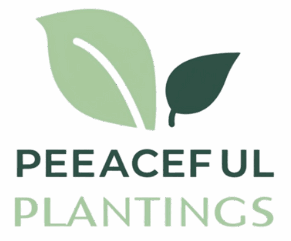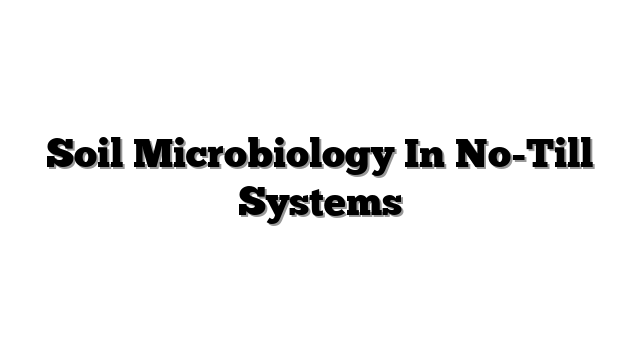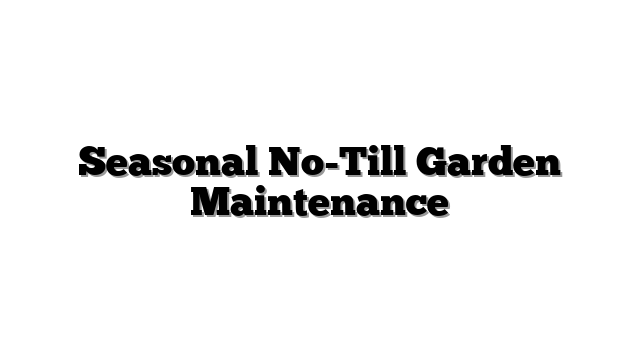Soil Microbiology In No-Till Systems
Unlock Your Garden’s Potential: Soil Microbiology in No-Till Systems
Your garden feels tired. Plants struggle to grow big. You water all the time. Still, things look weak. Maybe the soil feels hard. It needs help. The secret lives underground. It is busy down there. Tiny life works hard. We often forget this. We can help these tiny workers. We can help them thrive. This makes plants happy. This makes gardens strong.
We talk about soil life. We mean small living things. They work in the dirt. They make the soil good. No-till means less digging. You disturb the soil less. This helps the tiny life. This article explains it all. We show what soil life does. We show why digging hurts it. We share easy no-till steps. You will see big garden changes. Your garden will be vibrant. It will need less work. Get ready to meet the soil helpers.
The Bustling City Beneath Your Beds: Understanding Soil Microbes
Soil is not just dirt. It is a living place. Billions of tiny things live there. We call them soil microbes. They are like a busy city. They work all the time.
Meet the Residents: Key Groups of Soil Organisms
Many workers live below. Bacteria are everywhere. They are very small. Some bacteria fix nitrogen. Plants need nitrogen to grow. Other bacteria break down leaves. They turn waste into food. Fungi are also important. Think of tiny threads. Mycorrhizal fungi are special. They connect to plant roots. They help roots find water. They help roots find food. Protozoa eat bacteria. Nematodes are tiny worms. Some are bad for roots. Many are good workers. They help the food web. Earthworms are bigger helpers. They make tunnels. This helps air and water move. They eat dead stuff. They leave good castings.
Their Essential Jobs: The Benefits Microbes Bring to Soil
These tiny things do big jobs. They break down dead plants. This is like composting. They make food for plants. We call this nutrient cycling. They build soil structure. They make tiny clumps. This helps air get in. This helps water soak deep. Good soil holds water better. Plants get water when needed. Microbes also fight bad bugs. They fight plant diseases. They help plants stay healthy. They store carbon too. This helps the planet. Healthy soil is full of life. It is a working team.
Soil life makes strong plants. It builds healthy garden soil. Microbes are soil life. Microbial activity feeds plants. The garden ecosystem needs them. The soil food web is complex. It works together.
Tilling: Unintentionally Harming Your Garden’s Living Heart
Many people dig their garden. They use a tiller. It seems like a good idea. It mixes things up. But it hurts the soil. It hurts the soil life.
Breaking Up the Party: How Tilling Disrupts Soil Structure
Tilling breaks soil apart. It breaks fungal networks. Mycorrhizal fungi threads are cut. These threads helped plants. Tilling smashes soil clumps. These clumps held air and water. Soil structure gets ruined. The soil gets too tight later. This is called compaction. Soil aeration gets worse. Roots struggle to grow.
Evicting the Residents: The Negative Impact on Microbes
Tilling kills many microbes. It exposes them to sun. It exposes them to air. Many cannot live like that. Beneficial bacteria die. Good fungi die too. The soil food web breaks. The tiny workers are gone.
Losing Precious Resources: Tilling’s Effect on Organic Matter & Nutrients
Tilling mixes air into soil. This makes dead stuff break down fast. Soil carbon escapes as gas. Nutrients wash away easily. Water retention gets worse. The soil holds less water. Healthy garden soil needs organic matter. Tilling wastes it quickly.
Tilling hurts soil structure. It reduces water retention. It loses soil carbon. It harms the healthy garden soil.
Embracing No-Till at Home: Simple Steps for a Healthier Garden
You can stop digging. Try no-till gardening. It is easy for home gardeners. It helps your soil. It helps your plants.
The Core Principle: Disturbing the Soil as Little as Possible
No-till means minimal soil work. You plant without deep digging. You add stuff on top. This protects the soil life. It does not mean never digging. You might dig a small hole. That is okay. Avoid big machines. Avoid turning soil over.
Getting Started: Converting an Existing Bed or Starting Fresh
Starting is simple. Try sheet mulching. This is like lasagna gardening. You layer wet cardboard. Add compost on top. Add leaves or straw. Plant right into it later. The layers break down. They feed the soil. Cover crops help empty beds. Plant seeds in fall. They grow over winter. They protect the soil. They add organic matter. Use permanent beds. Keep walking on paths only. Do not step on the beds.
Ongoing Practices for No-Till Success
Keep feeding the soil top. Add compost every year. Use mulch on top. Mulching protects soil. It saves water. Leave old plant stems sometimes. They break down slowly. Use a broadfork tool. It loosens soil deep down. It does not flip the soil. Plant seeds carefully. Use a small trowel. Remove weeds gently. Do not pull big clumps of soil. Use sharp tools. A soil knife works well.
No-till gardening for home gardeners works. Try organic no-till gardening. Composting is key. Mulching helps a lot. Cover crops build soil. It is sustainable gardening.
From Soil Health to Plant Power: Seeing the Benefits Above Ground
Good soil means great plants. No-till helps soil. Healthy soil helps plants grow. You see the benefits fast.
Nutrient Delivery System: Microbes Feeding Your Plants
Microbes find food for roots. They make nutrients easy to use. Plants get what they need. They grow strong and healthy. You need less fertilizer. Organic gardening works better. It is sustainable gardening. Nutrient cycling is efficient. Plant health improves greatly.
Stronger Foundations: How Soil Structure Supports Root Growth
No-till soil is loose below. Roots grow deeper easily. They spread out wide. They find more water. They find more food. Root growth is amazing. Soil aeration is good. Plants stay hydrated. Improving soil structure helps roots.
Natural Defenders: Microbes Protecting Your Plants
Good microbes fight bad ones. They protect roots from sickness. Plants get sick less often. They resist pests better. Pest and disease resistance grows. Plants handle stress better.
Water Wisdom: Better Drainage and Water Retention
Good soil structure drains well. It does not get waterlogged. It holds water like a sponge. Plants get water when dry. Water retention is key. Smart irrigation helps maintain soil moisture. Healthy soil works well with smart systems.
Benefits of no-till gardening are clear. Soil health for plants is vital. Plant health thrives. Root growth improves. Nutrient cycling is better. Pest and disease resistance increases. Improving soil structure is possible.
Nurturing Your Soil Ecosystem: Long-Term No-Till Strategies
No-till is not just one year. It gets better over time. Keep helping your soil. It will keep helping you.
Feed the Soil, Not Just the Plant: Consistent Organic Matter
Always add stuff on top. Use wood chips for paths. Use straw or leaves for beds. Mulching is a must. Add compost each spring. Composting feeds the microbes. Leaving some plant residue helps. It breaks down slowly.
Avoid Chemical Disruptors: The Impact of Pesticides and Synthetic Fertilizers
Chemicals hurt soil life. They kill good microbes. Avoid pesticides. Avoid strong fertilizers. Stick to organic gardening. Use gentle organic feeds.
Water Management: Keeping Microbes Happy
Soil life needs water. Keep soil evenly moist. Not too wet. Not too dry. Water retention is important. Smart irrigation systems help. They give water slowly. This keeps microbes happy.
Plant Diversity and Rotation: Supporting a Robust Ecosystem
Grow many different plants. Different roots feed different microbes. Choose native plants. They work with local soil life. Native plants are a trend now. Use cover crops in winter. They protect soil. They add food for microbes.
Healthy garden soil gets better. Organic gardening is the way. Composting adds life. Mulching protects. Sustainable gardening builds soil. Native plants help local life. Smart irrigation helps water.
Your No-Till Soil Microbiology Questions Answered
You might have questions. That is good. Here are some answers.
What’s the best way to start no-till gardening if my soil is currently compacted clay/rocky?
Start small. Add lots of compost on top. Use sheet mulching. It adds layers slowly. The soil below gets better. A broadfork helps loosen deep soil. Do not turn it over. Healthy garden soil takes time.
How quickly will I see results in my garden after switching to no-till?
Results vary. You might see changes fast. Better plant health in year one. Soil structure improves over years. Be patient. It is worth it.
Do I still need to add compost or fertilizer in a no-till system?
Yes, add compost. It feeds the microbes. They feed the plants. You need less fertilizer. Use organic options if needed. Nutrient cycling improves.
How do I deal with weeds in a no-till garden?
Mulch helps stop weeds. Pull small weeds early. They come out easy. Do not disturb soil much. Cover crops can reduce weeds.
Is Soil Microbiology in No-Till Systems relevant for container gardening too?
Yes, but different. Containers are small. Soil life is limited. Use good quality potting mix. Add compost. Avoid chemicals. Plant health matters everywhere.
Gardening for beginners can start no-till. Healthy garden soil is the goal. Organic gardening supports soil life. Soil structure gets better.
Cultivating the Unseen: Your Path to a Thriving No-Till Garden
Soil life is amazing. It works for you. Soil Microbiology in No-Till Systems is simple. It means protecting soil life. Stop the deep digging. Add food on top. Let microbes do their job.
You get healthier plants. Your garden is stronger. It needs less care over time. Sustainable gardening is easy. Focus on the soil below. It gives back above ground. Plant health will thank you.
Try one no-till method. Start with mulching. Or try a compost layer. See what happens. Your garden will change. It will feel more alive. Explore more resources here. Learn about composting. Find out about mulches. Share your garden story.


